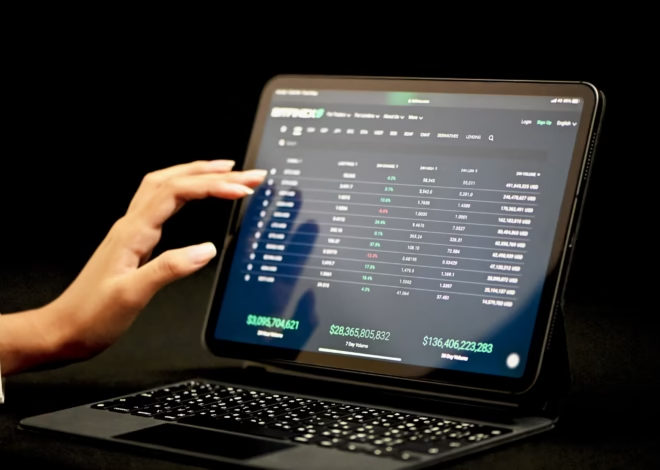
How Crypto Volatility Influences Forex Markets in Asia
Cryptocurrency markets are known for their extreme volatility, with prices sometimes swinging by double digits in a single day. While volatility is inherent to crypto, its influence is now spilling over into traditional financial markets, particularly in Asia, where the intersection of forex and crypto is becoming more pronounced. As Asia is home to some of the largest crypto markets and rapidly growing forex sectors, it’s important to understand how crypto price fluctuations are influencing forex trading strategies, currency pairs, and market behaviors across the region.
In this blog, we’ll explore the ways in which crypto volatility is impacting forex markets in Asia and how traders can navigate this evolving landscape.
The Connection Between Crypto and Forex
The forex market is the largest and most liquid market in the world, with trillions of dollars worth of currencies traded daily. On the other hand, cryptocurrency markets, while still smaller, have seen exponential growth over the past decade, with Asia leading the charge in adoption and trading volume. As more traders and investors move between these two markets, crypto volatility has started to influence traditional currency pairs, particularly in economies with strong ties to the digital asset ecosystem.
Key Drivers of Crypto Volatility
Before diving into how crypto impacts forex markets, it’s important to understand the factors that drive volatility in cryptocurrencies:
- Speculation and Market Sentiment: Cryptocurrencies, particularly Bitcoin and Ethereum, are heavily influenced by market speculation, media coverage, and investor sentiment. Positive or negative news can drive sharp price changes, affecting market stability.
- Regulatory News: Changes in government policies, especially in crypto-heavy regions like Asia, can trigger market reactions. For example, regulatory crackdowns or supportive legislation can cause significant price swings.
- Liquidity Levels: Compared to forex markets, crypto markets are relatively illiquid, meaning large trades can cause significant price movements, amplifying volatility.
- Technological Factors: Security breaches, forks, or network upgrades can lead to sharp changes in the value of cryptocurrencies, further contributing to their volatility.
How Crypto Volatility Affects Forex Markets in Asia
1. Influence on Regional Currencies
Asia is home to several economies that are closely tied to cryptocurrency markets, and their currencies can experience direct or indirect impacts from crypto volatility. For example:
- Japanese Yen (JPY): Japan is one of the most crypto-friendly countries in the world, with a regulated environment that fosters crypto adoption. When Bitcoin prices surge or crash, traders in Japan often move significant amounts of money between crypto and fiat, impacting liquidity and volatility in currency pairs like BTC/JPY and USD/JPY. A major spike in crypto prices can lead to more trading volume in JPY, influencing demand and causing temporary fluctuations in its value.
- South Korean Won (KRW): South Korea is another major hub for crypto trading, especially retail investment. The country has some of the highest crypto trading volumes per capita in the world. This strong connection means that crypto price swings often translate into market movements in the KRW. For instance, during Bitcoin bull runs, there may be an influx of capital into crypto from South Korean investors, leading to a temporary dip in KRW liquidity and volatility in pairs like USD/KRW.
- Chinese Yuan (CNY): Even though China has officially banned cryptocurrency trading, Chinese investors continue to influence global crypto markets through offshore exchanges and over-the-counter (OTC) platforms. The volatility in crypto markets can still affect offshore yuan (CNH) trading, as investors move capital between crypto and traditional assets to hedge against price movements.
2. Increased Volatility in Crypto/Fiat Pairs
With the increasing availability of crypto/fiat pairs offered by forex brokers, volatility in the crypto market has a direct impact on these pairs. For example, traders can now speculate on pairs like BTC/JPY, ETH/USD, or XRP/KRW. When cryptocurrencies experience sharp price movements, it increases volatility in these pairs, creating opportunities for forex traders but also adding risk.
For example, during Bitcoin’s price rally in late 2020 and early 2021, crypto/fiat pairs saw heightened volatility, with some pairs experiencing daily price swings of 10% or more. This creates an opportunity for short-term forex traders to profit from the volatility, but also requires careful risk management strategies.
3. Safe-Haven Currency Flows
When cryptocurrency prices experience extreme volatility, many investors move their capital to safer assets. In Asia, this often means a flow into so-called “safe-haven” currencies such as the Japanese yen (JPY) or the Swiss franc (CHF). The yen, in particular, sees inflows during periods of crypto market instability, as investors look for a more stable store of value.
For example, during major crypto market crashes, traders and investors might sell off their digital assets and move their funds into fiat currencies, especially JPY, to preserve capital. This can cause a temporary strengthening of the yen, leading to movements in currency pairs like USD/JPY or EUR/JPY.
4. Cross-Border Payment Flows and Remittances
Cryptocurrencies are increasingly being used for cross-border payments and remittances, particularly in regions with high crypto adoption. As crypto prices fluctuate, the cost-effectiveness of using digital assets for remittances changes, influencing forex markets. When crypto prices rise, more people might use cryptocurrencies for international transfers, reducing demand for traditional currency exchanges. Conversely, when crypto prices fall, there could be a resurgence in traditional forex-based remittances.
For instance, Southeast Asian countries like the Philippines and Vietnam have seen a rise in crypto adoption for cross-border transactions. When crypto volatility increases, it can lead to fluctuations in forex markets as people switch between crypto and traditional currencies for remittances.
5. Impact on Central Bank Policies
In regions where cryptocurrencies are widely used, central banks are keeping a close watch on crypto volatility and its potential spillover effects on the broader economy. For example, the Bank of Japan and the Monetary Authority of Singapore have both expressed interest in how crypto market movements could influence forex markets and monetary policy.
Crypto volatility can influence inflation expectations and exchange rate stability, which in turn could lead central banks to adjust interest rates or intervene in forex markets to stabilize their national currency.
How Forex Traders Can Navigate Crypto Volatility
Crypto volatility offers both opportunities and risks for forex traders. Here are a few strategies to consider when navigating these intertwined markets:
1. Use Crypto/Fiat Pairs for Diversification
- Forex traders can take advantage of the volatility in crypto/fiat pairs like BTC/JPY or ETH/USD to diversify their portfolios. However, these pairs require careful analysis and risk management due to the unpredictable nature of crypto markets.
2. Hedge Against Crypto Volatility with Forex
- Traders holding cryptocurrency assets can use forex markets to hedge against potential losses from crypto volatility. For example, if a trader expects a major drop in Bitcoin prices, they can short a currency pair like BTC/USD to mitigate the impact on their overall portfolio.
3. Monitor Regulatory Developments
- Regulatory changes in Asia can have a significant impact on both crypto and forex markets. Traders should keep a close watch on government policies regarding cryptocurrencies in key countries like China, Japan, and South Korea, as these changes can trigger large price movements.
4. Stay Updated on Market Sentiment
- Crypto markets are highly sensitive to news and investor sentiment. Forex traders should monitor developments in the crypto world, such as major hacks, regulatory announcements, or technological upgrades, as these events can drive volatility in both crypto and forex markets.
Conclusion
Crypto volatility is becoming an increasingly important factor for forex traders in Asia. As the lines between the crypto and forex markets blur, traders must stay informed about how price movements in digital assets can impact traditional currency pairs. By understanding the factors driving crypto volatility and its influence on regional currencies, forex traders can better navigate this evolving landscape and capitalize on the opportunities it presents.


